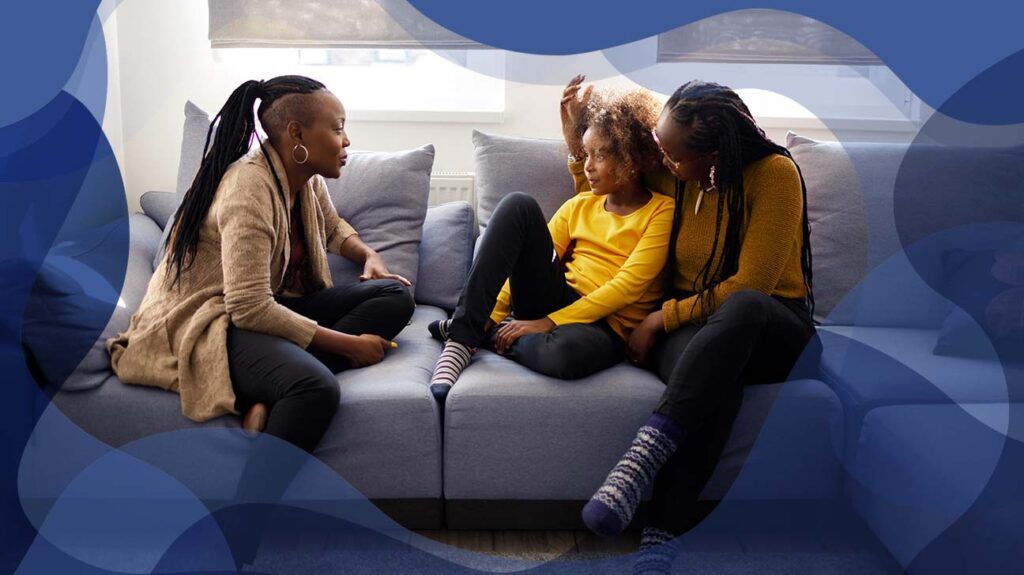The short-term intervention was developed to help children and adolescents who have experienced a traumatic event.

As the name suggests, trauma-focused CBT (TF-CBT) addresses trauma. It was developed specifically for children and adolescents who have experienced or witnessed traumatic events.
Cognitive behavioral therapy (CBT) treats several mental health conditions, such as depression and anxiety. CBT is typically a short-term intervention (8 to 12 sessions, sometimes up to 25), focusing on one specific issue.
TF-CBT aims to help both children and their nonoffending caregivers identify, understand, and address the impacts of trauma ranging from emotional symptoms to behavioral and learning challenges.
The available research, which includes numerous randomized controlled trials, has shown that TF-CBT can be an effective trauma treatment.
TF-CBT is a type of therapy that involves treating the child and educating and empowering their caregivers or parents. A central goal is to support parents in building skills related to positive parenting, improving communication, and managing any distress about the child’s trauma, all of which help the child feel more supported.
This therapy involves psychoeducation, a therapeutic intervention based on learning information to better understand and cope with illnesses or diagnoses. By understanding the effects of trauma, you are better equipped to cope with it, find practical solutions, and seek support.
TF-CBT can be delivered by counselors, social workers, psychologists, or psychiatrists. To be considered a TF-CBT therapist, mental health providers have to receive specialized training and supervision and obtain TF-CBT certification.
Trauma-focused CBT includes three treatment phases:
- stabilization
- trauma narration and processing
- integration and consolidation
Eight components fall within these three phases. These phases are denoted by the acronym PRACTICE:
- Psychoeducation and parenting skills. This involves providing information about trauma and trauma responses, thus validating how the child feels. Caregivers are taught techniques on coping with the child’s trauma responses and skills training related to child behavior management, positive parenting and improving communication.
- Relaxation techniques. The child is taught relaxation skills to help them cope with trauma responses.
- Affective expression and regulation. This helps the child and the parent become more comfortable managing, expressing and identifying their thoughts and feelings, to foster greater emotional regulation.
- Cognitive coping and processing. This helps the child and caregiver identify potentially inaccurate or maladaptive thoughts and behaviors and their connection to thoughts and feelings so that they can replace them with more helpful responses.
- Trauma narrative development and processing. Here, the child gradually addresses specific details about their trauma, often through a creative medium, which allows the child to process the experience and their reactions. The child shares this narrative with their caregiver in a joint session, allowing parents to process the experience and their reactions.
- In vivo exposure. Depending on the needs of the child, this component does not always take place. This involves gradually exposing the child to trauma reminders to build and develop skills to master fears rather than fostering avoidance.
- Conjoint parent-child sessions. Joint sessions provide caregivers and their child the opportunity to receive support and discuss the trauma that has occurred in a therapeutic setting.
- Enhancing safety and future development. The therapist, child, and caregiver develop strategies to improve the child’s feelings of safety and trust through training and skill-building.
TF-CBT therapy sessions can include:
- individual sessions with the child
- individual sessions with the caregiver(s)
- joint sessions with the child and caregiver(s)
- group therapy, involving both children and caregivers
TF-CBT is one specific kind of CBT. A significant difference between the two is that, unlike regular CBT, trauma-focused CBT focuses specifically on the impacts of trauma.
While TF-CBT was specifically developed to help children and adolescents after trauma, regular CBT is for people of all ages.
Regular CBT isn’t only for people who have experienced trauma — it can also address anxiety, mood disorders, eating disorders, schizophrenia, and more. It can also help with stress, relationship conflict, and anger management concerns.
Regular CBT typically focuses on the individual with a challenging experience, while TF-CBT focuses on the child and involves sessions with the parents or caregiver(s).
TF-CBT is effective at improving symptoms of post-traumatic stress disorder (PTSD) and preventing depression and behavioral challenges. It also
The research on TF-CBT has found that it can be effective for numerous kinds of trauma, including experiencing or witnessing:
- physical or sexual abuse
- neglect
- traumatic loss
- domestic violence
- community violence
- accidents
- natural disasters
- war
If you’re not sure whether TF-CBT can help a child or teen in your care, it’s best to speak with a medical or mental health professional.
Childhood trauma can have a lasting effect on a person. There are many treatments for children or adolescents who have experienced trauma, including TF-CBT.
If you would like to find help for a child or teen, consider a therapist experienced in working with their age group, as not all therapists treat children.
If you’re specifically looking for someone to administer TF-CBT, the TF-CBT Therapist Certification Program website has a Find A Therapist tool (limited to the United States).
